Foreword
Contents
Introduction
1 Load Flow Calculation and Its Application
Abstract
1.1 Introduction
1.2 Network Models in PowerFactory for Load Flow
1.3 Project Planning Using Load Flow Calculation
1.3.1 Case Study: Low-Voltage Network
1.3.2 Case Study: Medium-Voltage Network
1.3.3 Case Study: Load Profile Analysis
1.4 Conclusion
References
2 Modelling of Transmission Systems Under Unsymmetrical Conditions and Contingency Analysis Using DIgSILENT PowerFactory
Abstract
2.1 Introduction
2.2 Overhead Line Model
2.2.1 Distributed Parameter Model
2.2.2 Lumped Parameter Model
2.2.3 Tower Model
2.3 Power Flow Analysis Under Unbalanced Conditions
2.4 Contingency Analysis
2.4.1 Single Time-Phase Contingency
2.5 Using Distribution Factors to Study the Outage of a Transmission Line
References
3 Probabilistic Power Flow Module for PowerFactory DIgSILENT
Abstract
3.1 Introduction
3.2 Monte Carlo Simulation
3.3 Point Estimate Method
3.4 Implementation of the Probabilistic Power Flow Analysis
3.4.1 Monte Carlo Simulation
3.4.2 Point Estimate Method
3.5 DPL Implementation of Probabilistic Power Flow Analysis
3.5.1 MCS Subroutine
3.5.2 PEM Subroutine
3.6 Illustrative Examples
3.6.1 Case I: Deterministic Load Flow
3.6.2 Case II: Monte Carlo Probabilistic Load Flow
3.6.3 Case III: Point Estimate Probabilistic Load Flow
3.7 Discussion
3.8 Conclusion
References
4 Unbalanced Power Flow Analysis in Distribution Systems Using TRX Matrix: Implementation Using DIgSILENT Programming Language
Abstract
4.1 Introduction
4.2 The 5-Wire Multigrounded Distribution System Model
4.2.1 The Network Model
4.2.2 Power Injection Model
4.3 Implementation
4.3.1 General Considerations
4.3.2 DPL Code: Step-by-Step Description
4.3.2.1 Section INTRODUCTION
4.3.2.2 Section LINES
4.3.2.3 Section CONDUCTORS
4.3.2.4 Section TOWERS
4.3.2.5 Section LOADS
4.4 The 5-Wire Power Flow Algorithm
4.5 Testing: 3-Section Distribution Test System
4.6 Conclusion
A.0. Appendix A---Distribution Line Model
A.0. Appendix B---DPL5Wire Code
A.0. Appendix C---DPL Script for Displaying Final Results in DIgSILENT
A.0. Appendix D---Case Study: I/O Files Structure
References
5 DC Optimal Power Flow Formulation Using the Power Transmission Distribution Factors---A DIgSILENT Programming Language Application
Abstract
5.1 Introduction
5.1.1 Direct Current (DC) Optimal Power Flow (DCOPF)
5.1.2 Literature Review
5.2 Optimal Power Flow Formulation
5.2.1 Classical DCOPF Formulation
5.2.2 DCOPF Formulation Using the Power Transmission Distribution Factors (PTDF)
5.3 Primal-dual Interior-point Solver
5.3.1 First Order Optimality Conditions
5.3.2 Newton Step
5.3.3 Primal-dual Interior-point Algorithm
5.3.4 Analysis of the Problem Dimension
5.4 DIgSILENT Programming Language
5.4.1 Creating a New DPL Command
5.4.2 Interior-point Flowchart
5.5 Illustrative Examples and Simulation Results
5.5.1 DCOPF Formulation Using the Power Transmission Distribution Factors
5.5.2 PTDF-based Formulation Applied to IEEE Systems
5.6 Conclusions
Acknowledgments
References
6 Assessing the Renewable Energy Sources Integration Through a Series of Technical Performance Indices Using DIgSILENT PowerFactory DPL
Abstract
6.1 Introduction
6.1.1 Chapter Contribution
6.1.2 Theoretical Background
6.1.2.1 Power Losses Indices
6.1.2.2 Voltage Deviation Index`Voltage Deviationindex'.
6.1.2.3 Line Loading Index
6.1.3 Creating a Synthesized DPL Script for RES Integration Studies
6.1.4 MAIN.ComDpl
6.1.5 LoadScaling.ComDpl
6.1.6 Basescenario.Dpl
6.1.7 WindScaling.ComDpl
6.1.8 RESscenario.ComDpl
6.1.9 OPF.ComDpl
6.1.10 PowerLosses.ComDpl
6.1.11 VoltageDeviation.ComDpl
6.1.12 LineLoading.ComDpl
6.2 Case Study Results
6.3 Conclusion
References
7 Modeling of Automatic Generation Control in Power Systems
Abstract
7.1 Introduction
7.2 Theoretical Background of the Frequency Control
7.3 Automatic Generation Control Model in PowerFactory
7.4 Secondary Control Modeling by Load Flow Command
7.5 Transient Simulation of the Frequency Control in Power Systems
References
8 Gas Turbine Modelling for Power System Dynamic Simulation Studies
Abstract
8.1 Introduction
8.2 Modelling of a Combined Cycle Gas Turbine Plant
8.3 Dynamic Modelling of a CCGT Plant
8.4 CCGT Model Initialisation
8.5 Dynamic Modelling of an OCGT Plant
8.6 Case Study: Comparison of CCGT and OCGT Dynamics
8.6.1 Test Network System
8.6.2 Gas Turbine Response During a Low-frequency Event
8.6.3 Gas Turbine Dynamics During Frequency Increase Events
8.6.4 Dynamic Behaviour of Gas Turbines During Short-Circuit Events
References
9 Implementation of Simplified Models of DFIG-Based Wind Turbines for RMS-Type Simulation in DIgSILENT PowerFactory
Abstract
9.1 Introduction
9.2 Mathematical Model of DFIG
9.2.1 Quasi-Stationary Model (Reduced Third-Order Model)
9.3 DFIG Model Representation
9.3.1 Wind Turbine Mechanical Model and Drive Train
9.3.2 Speed and Pitch Control
9.3.3 Calculation of Reference Values for Rotor Currents
9.3.4 Rotor-Side Converter Current Control
9.3.5 Reference Values of LSC Currents
9.3.6 Line-Side Converter Current Control
9.4 Dynamic Equivalent for WPP
9.5 Implementation in DIgSILENT PowerFactory
9.5.1 Dynamic Equivalent
9.5.2 DFIG Turbine Model and RSC
9.5.3 Initialization of Turbine Model and RSC
9.5.4 LSC Model
9.5.5 Initialization of the LSC
9.6 Implementation in DIgSILENT PowerFactory
9.6.1 Performance of the DFIG Model
9.6.2 Performance of the Dynamic Equivalent
9.7 Conclusions
References
10 Parameterized Modal Analysis Using DIgSILENT Programming Language
Abstract
10.1 Introduction
10.2 Power System Dynamic Modeling and Stability
10.2.1 Electromechanical Modeling
10.2.2 Linearized Model
10.2.3 Modal Analysis
10.2.4 Classification of Electromechanical Modes
10.2.5 Parameterizing Modal Analysis
10.3 DPL Scripting
10.3.1 Parameterized Modal Analysis Using DPL
10.3.2 Creating a New DPL Command
10.4 Application to a Real System
10.4.1 Northern Chile Interconnected System (SING)
10.4.2 Base Case
10.4.3 Effect of Generating Unit Loading Factor
10.4.3.1 Creating the DPL
10.4.3.2 Analysis of the Results
10.4.4 Effect of the Mismatch Between Economic Dispatch and Real Operation
10.4.5 Final Remarks
10.5 Conclusion
Acknowledgments
References
11 Probabilistic Approach for Risk Evaluation of Oscillatory Stability in Power Systems
Abstract
11.1 Introduction
11.2 The MC-Based Procedure
11.3 Implementation in DPL Language
11.3.1 DPL Script
11.4 The PST 16 Benchmark System
11.4.1 Loads and Transmission Network
11.4.2 Modelling of Generators
11.5 Simulation Results
11.6 Conclusions
References
12 Mean--Variance Mapping Optimization Algorithm for Power System Applications in DIgSILENT PowerFactory
Abstract
12.1 Introduction
12.2 Rationale Behind MVMO
12.2.1 Initialization
12.2.2 Fitness Evaluation and Termination Criterion
12.2.3 Solution Archive
12.2.4 Parent Selection, Crossover, and Mutation
12.3 MVMO Implementation in DPL Language
12.3.1 Main Script---MVMO Implementation Procedure
12.3.2 Subroutine for Function Evaluation
12.3.3 Script for Load of Results
12.4 Application Examples
12.4.1 Test System
12.4.2 Simulation Results
12.5 Concluding Remarks
References
13 Application and Requirement of DIgSILENT PowerFactory to MATLAB/Simulink Interface
Abstract
13.1 Introduction to the MATLAB/Simulink to PowerFactory Interface
13.1.1 Requirement for Interfacing
13.2 Characteristics of the Test System for the First Study Case
13.2.1 Modelling of the Thyristor-Controlled Compensation (TCSC)
13.2.2 Test System
13.3 Overall Structure of the DIgSILENT PowerFactory to MATLAB Interface
13.4 Study Case 1
13.4.1 Demonstrating the Process of Interfacing PowerFactory to MATLAB/Simulink
13.4.2 The Built-in PI Controller in PowerFactory
13.4.3 The External PI Controller in MATLAB/Simulink
13.4.3.1 Setting up the Required Structure (on the PowerFactory Side) to Create an Interface
13.4.3.2 Initial Condition Definition and Calculation
13.4.3.3 Setting up the Required Structure (on MATLAB/Simulink Side) to Create the Interface
13.4.4 Performance Comparison of Built-in and External Controllers
13.5 Study Case 2
13.5.1 Design and Implementation of the PSS-Based POD for TCSC Using MATLAB/Simulink Script
13.5.2 Inter-area Oscillation Control with TCSC
13.5.3 Characteristics of the Test System for the Second Study Case
13.5.3.1 Structure of the Supplementary PSS-Based Damping Controller for the TCSC
13.5.4 Interfacing PowerFactory and MATLAB/Simulink for Design of POD Control
13.5.4.1 Setting up the Required Structure for Interface (on the PowerFactory Side)
13.5.4.2 Setting up the Required Structure for Interface (on MATLAB/Simulink Side)
13.5.5 Interfacing PowerFactory and MATLAB for the Design of POD Using Script (Second Approach)
13.5.6 Comparative Simulation Results on Performance of PSS-Based POD Controller
13.6 Conclusion
Acknowledgments
References
14 Advanced Applications of DPL: Simulation Automation and Management of Results
Abstract
14.1 Introduction
14.2 Simulation Automation
14.2.1 Creating and Assigning of External Characteristics
14.2.2 Creating and Assigning of Triggers
14.2.3 Updating Variables of the Result Set
14.2.4 Running the Simulation
14.3 Batch Simulations via RCOM
14.4 Example Project
14.4.1 Description
14.4.2 Preparation
14.4.3 Control Characteristic
14.4.4 Control Algorithm
14.4.5 Run Voltage Control with Input Parameters from Excel
14.4.6 Voltage Control with Reactive Power from PV Inverters
14.4.7 Analysing Simulation Results
14.5 Conclusions
14.5.1 Outlook
References
15 Interfacing PowerFactory: Co-simulation, Real-Time Simulation and Controller Hardware-in-the-Loop Applications
Abstract
15.1 Introduction
15.2 Co-simulation
15.2.1 Motivation for Co-simulation
15.2.2 Real Time
15.3 Interfaces for Co-simulation
15.3.1 MATLAB/Simulink
15.3.2 DSL Functions Linked to External DLLs
15.3.3 DPL Functions Linked to External DLLs
15.3.4 OPC---OLE for Process Communication
15.3.5 RCOM---Remote Procedure Call
15.3.6 API---Application Programming Interface
15.3.7 API Python
15.3.8 DGS
15.3.9 Summary Interfaces for Co-simulation
15.4 Customised External DSL Functions
15.4.1 External Event Driven C/C++ Function
15.4.2 External C/C++ User Function
15.4.3 External Communication with API and External DLL
15.5 Example Project: Co-simulation via TCP Sockets
15.5.1 Description
15.5.2 Preparation
15.5.2.1 Folder Structure and References
15.5.3 DSL Block Definition
15.5.3.1 Profiles
15.5.3.2 Communication with the External Controller
15.5.4 Composite Models in the Network
15.5.4.1 Profiles
15.5.4.2 Communication with the External Controller
15.5.5 External Controller (Tap Changer Control)
15.5.6 Simulation Set-up
15.5.6.1 Basic Options
15.5.6.2 Step Sizes
15.5.6.3 Real Time
15.5.7 Simulation Run
15.6 Conclusions
References
16 PowerFactory as a Software Stand-in for Hardware in Hardware-In-Loop Testing
Abstract
16.1 Introduction
16.2 Test System
16.3 Introduction to OPC Technology
16.4 Making the Demonstration System Using the Given Template
16.5 Running Simulation Using the Test System
16.5.1 Prerequisites
16.5.2 Configuring OPC Server
16.5.3 Configuring PowerFactory
16.5.4 Configuring OPC Tags in PowerFactory Model
16.5.5 Connecting PowerFactory Model to OPC Server
16.5.6 Using the Matrikon OPC Server Explorer to Monitor and Control the Demonstration System
16.5.7 Configuring Solar Irradiance and Temperature Profile
16.5.8 Initializing the System
16.5.9 Running the Simulation
16.6 Controlling the Model Using OPC Server Explorer
16.7 Conclusion
References
17 Programming of Simplified Models of Flexible Alternating Current Transmission System (FACTS) Devices Using DIgSILENT Simulation Language
Abstract
17.1 Introduction
17.2 DIgSILENT Simulation Language Implementation Steps
17.3 FACTS Implementation
17.3.1 Thyristor Controlled Series Capacitor (TCSC)
17.3.2 Static Synchronous Compensator (STATCOM)
17.3.3 Static Synchronous Series Compensator (SSSC)
17.3.4 Unified Power Flow Controller (UPFC)
17.4 Application Examples
17.4.1 Test System
17.4.2 Simulation Results
17.5 Concluding Remarks
References
18 Active and Reactive Power Control of Wind Farm Based on Integrated Platform of PowerFactory and MATLAB
Abstract
18.1 Introduction
18.1.1 Requirements on Active Power and Reactive Power Control of Wind Farms in China
18.1.2 Active and Reactive Power Control Principles
18.2 Building a Wind Farm Model Based on PowerFactory
18.2.1 Wind Farm Model
18.2.2 Modelling Wind Generator and Its Control Strategies [13]
18.2.2.1 Modelling Electrical System
18.2.2.2 Modelling Mechanic System
18.3 Modelling Power Controllers for Wind Farm Based on MATLAB
18.3.1 Modelling Active/Reactive Power Control of Wind Farm
18.3.1.1 Active Power Control Model
18.3.1.2 Reactive Power Control Model
18.3.2 Realization of Wind Farm Active/Reactive Power Control
18.4 Case Studies
18.4.1 Testing Wind Farm
18.4.2 Realization of Control Strategies
18.4.2.1 Realization of Active Power Control
18.4.2.2 Realization of Reactive Power Control
18.4.3 Simulation Analysis
18.5 Conclusion
References
19 Implementation of Simplified Models of Local Controller for Multi-terminal HVDC Systems in DIgSILENT PowerFactory
Abstract
19.1 Introduction
19.2 Control Strategies for MTDC Network Operation
19.3 Master Controller
19.4 Terminal Controller
19.5 Firing Control
19.6 Inner Controller
19.7 Outer Controller
19.7.1 Active Power Controller
19.7.2 Reactive Power Controller
19.7.3 AC Voltage Controller
19.8 DC Voltage Controller
19.8.1 Principle of Voltage Margin Method (VMM)
19.8.2 Principle of Voltage Droop Method (VDM)
19.9 Dynamic Modelling in DIgSILENT Power Factory
19.10 Modelling a MTDC in DIgSILENT Power Factory
19.10.1 Composite Frame
19.10.2 Model Definitions
19.10.3 Model Initialization
19.11 Application Example
19.11.1 Case I: Sudden Load Increase
19.11.2 Case II: One Converter Outage
References
20 Estimation of Equivalent Model for Cluster of Induction Generator Based on PMU Measurements
Abstract
20.1 Introduction
20.2 Equivalent Model for a Cluster of Induction Generators
20.3 Equivalent Model Estimation Method
20.4 Model Parameter Identification in DIgSILENT Power Factory
20.5 Demonstrative Example
20.5.1 Test System I
20.5.2 Test System II
References
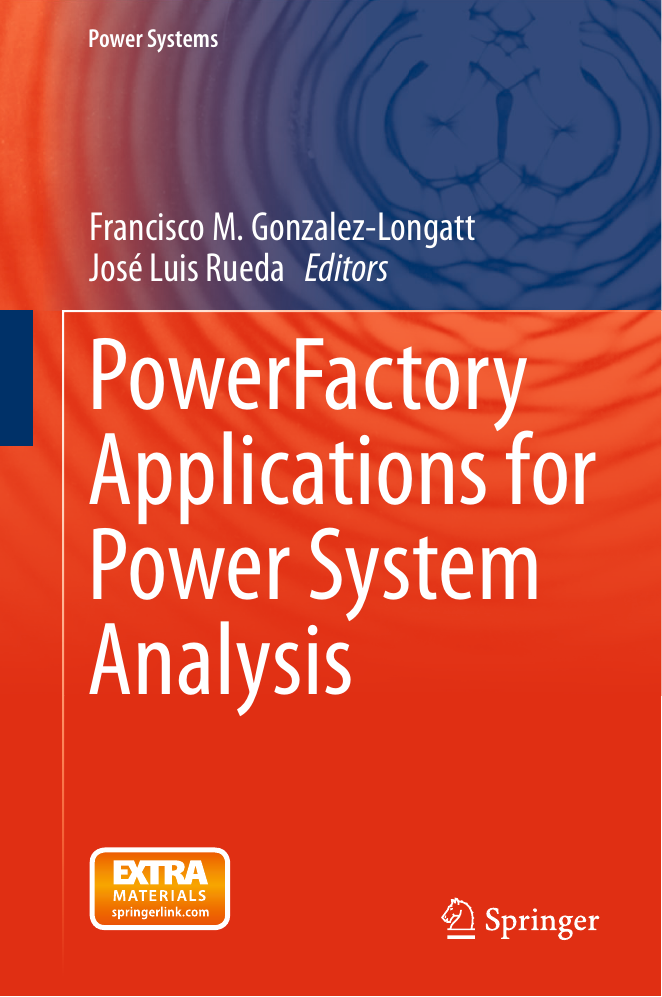
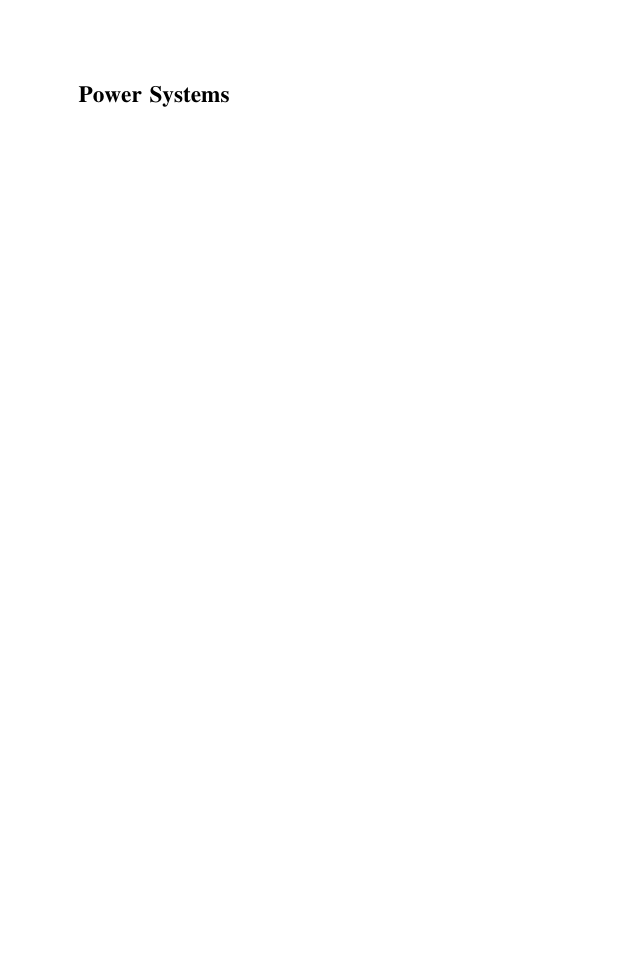

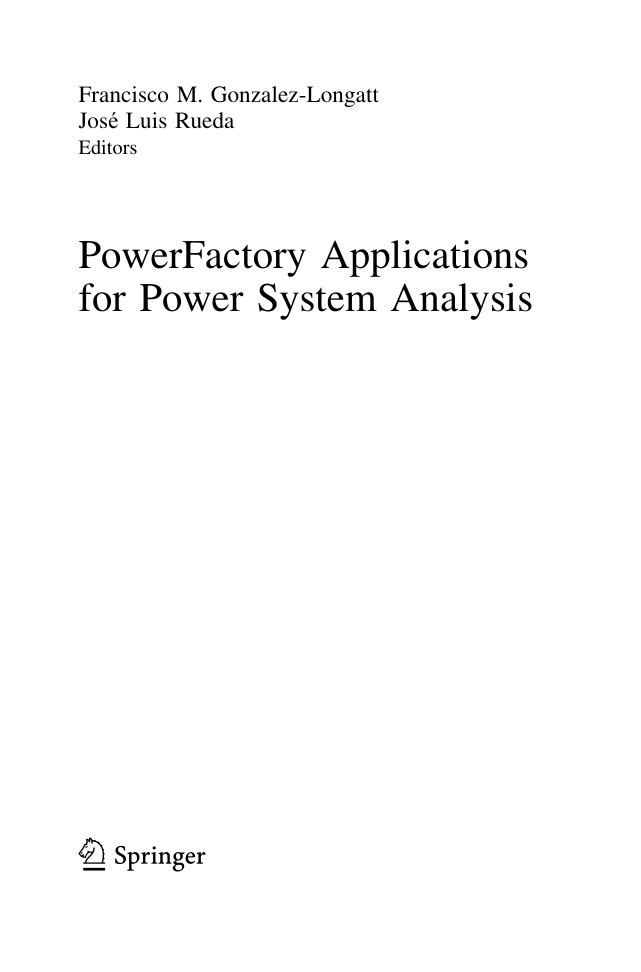
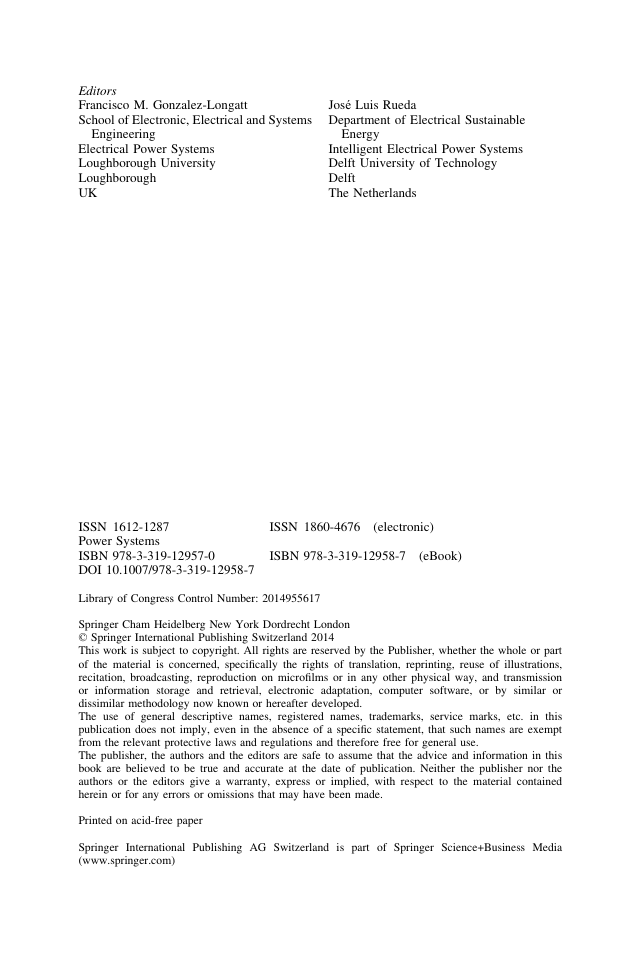
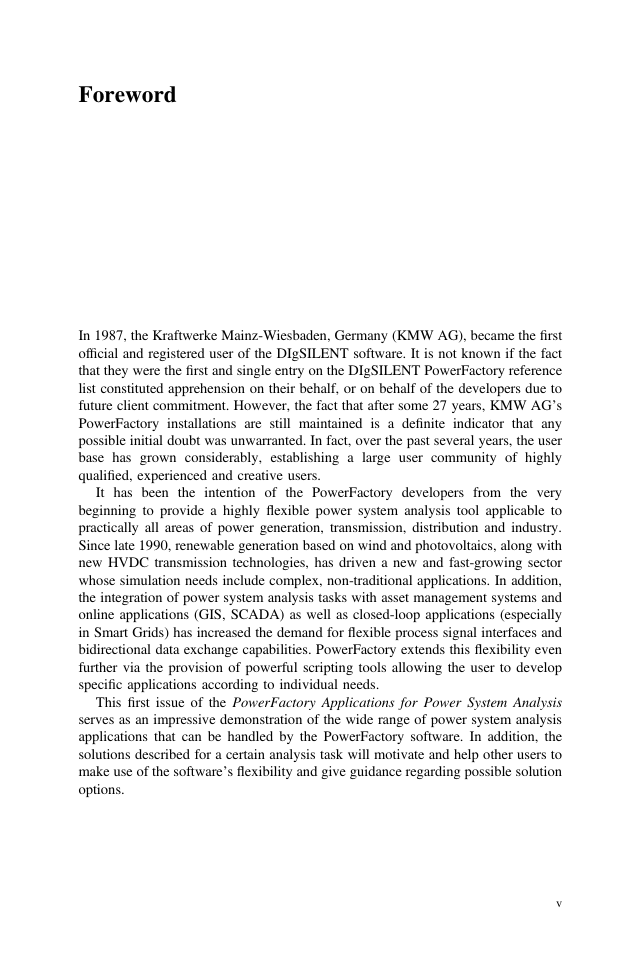

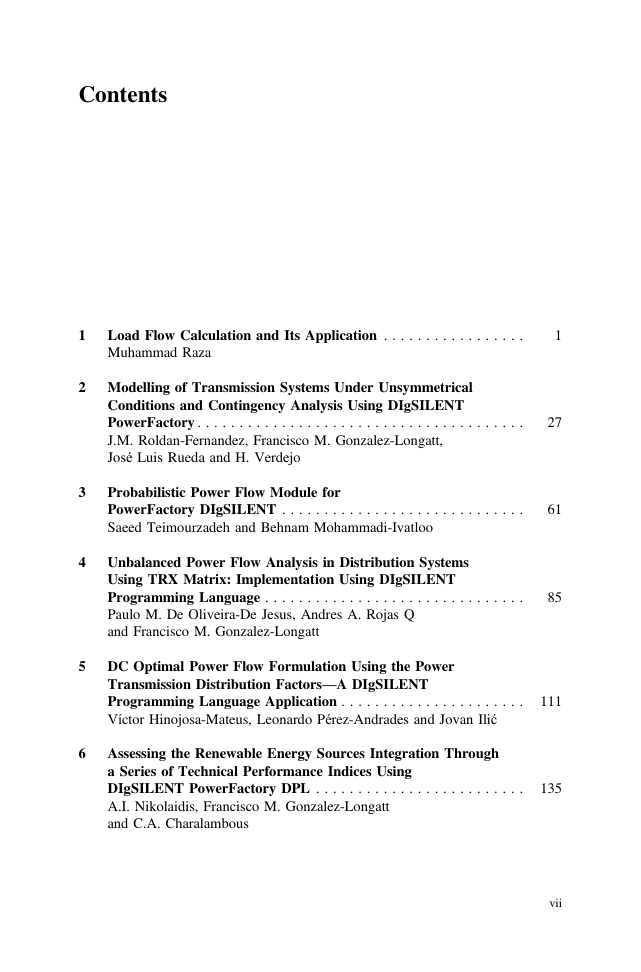








 2023年江西萍乡中考道德与法治真题及答案.doc
2023年江西萍乡中考道德与法治真题及答案.doc 2012年重庆南川中考生物真题及答案.doc
2012年重庆南川中考生物真题及答案.doc 2013年江西师范大学地理学综合及文艺理论基础考研真题.doc
2013年江西师范大学地理学综合及文艺理论基础考研真题.doc 2020年四川甘孜小升初语文真题及答案I卷.doc
2020年四川甘孜小升初语文真题及答案I卷.doc 2020年注册岩土工程师专业基础考试真题及答案.doc
2020年注册岩土工程师专业基础考试真题及答案.doc 2023-2024学年福建省厦门市九年级上学期数学月考试题及答案.doc
2023-2024学年福建省厦门市九年级上学期数学月考试题及答案.doc 2021-2022学年辽宁省沈阳市大东区九年级上学期语文期末试题及答案.doc
2021-2022学年辽宁省沈阳市大东区九年级上学期语文期末试题及答案.doc 2022-2023学年北京东城区初三第一学期物理期末试卷及答案.doc
2022-2023学年北京东城区初三第一学期物理期末试卷及答案.doc 2018上半年江西教师资格初中地理学科知识与教学能力真题及答案.doc
2018上半年江西教师资格初中地理学科知识与教学能力真题及答案.doc 2012年河北国家公务员申论考试真题及答案-省级.doc
2012年河北国家公务员申论考试真题及答案-省级.doc 2020-2021学年江苏省扬州市江都区邵樊片九年级上学期数学第一次质量检测试题及答案.doc
2020-2021学年江苏省扬州市江都区邵樊片九年级上学期数学第一次质量检测试题及答案.doc 2022下半年黑龙江教师资格证中学综合素质真题及答案.doc
2022下半年黑龙江教师资格证中学综合素质真题及答案.doc